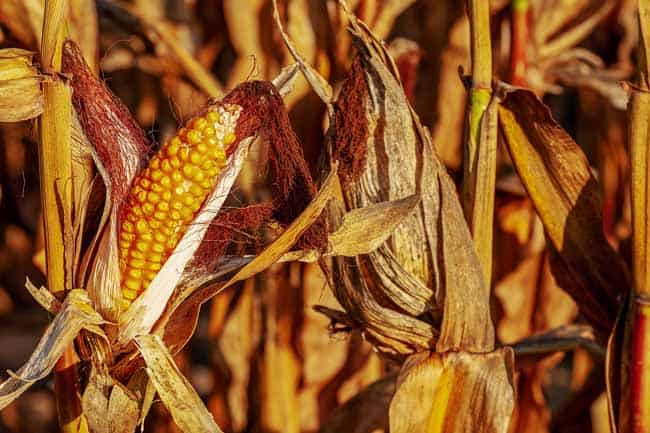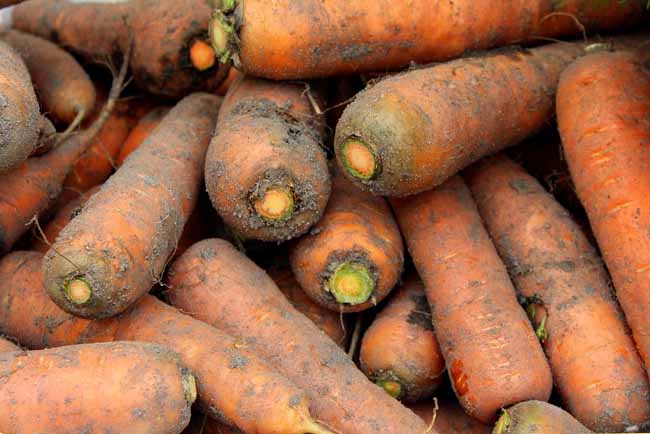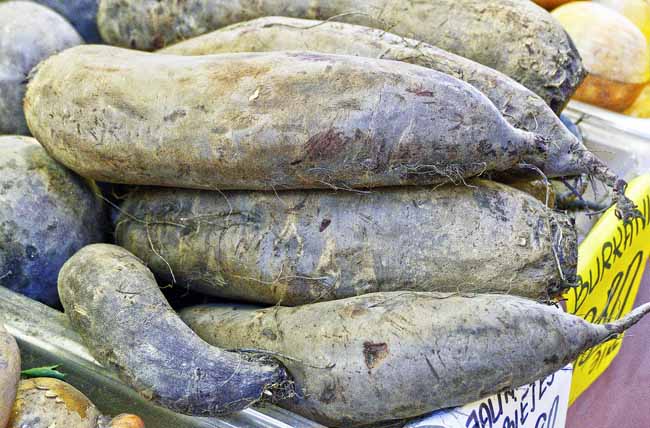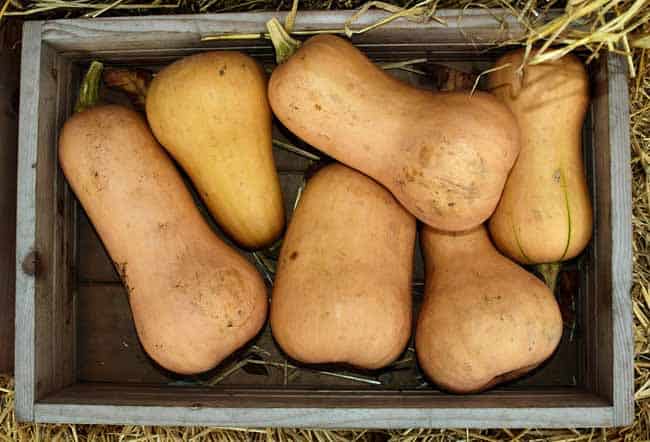Vegetables aren’t often associated with a high-calorie food, but there are some noteworthy exceptions.
These calorie-rich examples are exceptionally valuable as an emergency food source.
And if you’re vegetarian but trying to put on some weight and mass, these calorie-dense veggies can provide you the gains you are seeking.
10 Calorie Rich Vegetables
Before we get too far along let’s establish that “vegetables” is a culinary term, but we’ve all got that general idea of what a veggie really is. We’ll be sticking close to that familiarity, but try not to raise an eyebrow when I list off some legumes in the following list!
Generally speaking you’ll find that any of the starchy vegetables provide plenty of calories, especially the root vegetables.
This is because root vegetables (carrots, potatoes, etc) are storing all of their energy in underground storage to get them through the winter and start growing anew in the spring.
Cooking Methods
How you cook your veggies impacts their caloric richness as well. Frying a potato in oil will exponentially increase the calories you’re consuming compared to, say, boiling it.
We’ll be looking at the following veggies as if they were prepared simply and without added materials like oil or butter.
Cooking your vegetables is a double edged sword. On one hand you lose some of the nutritional content, but a cooked vegetable is easier for your body to process and absorb nutrients from. Listed below are numbers for cooked, not raw, veggies.
Note: The numbers listed below for each vegetable are difficult to get exact by any method of measurement, so for the ease of the reader (and your calorie allotment for the day) I’ve rounded the numbers up to the next 5 or 0.
Potatoes (White)

The king of vegetable calories, white potatoes are starchy and filled to the brim with minerals and vitamins.
Besides being relatively easy to grow, harvest, and store, the most significant benefit of potatoes is the list of ways they can be prepared.
They arguably are tastier than sweet potatoes, but that’s just my stance!
Nutrition: Loaded with potassium, magnesium, and vitamin C, and they’ve also got a bit of iron to their composition.
Calories (1 cup): 120
Potatoes (Sweet)

An alternative to white potatoes are sweet potatoes. Not my favorite taste in the world, but people love them. The orange color reflects plenty of beta carotene in their composition.
Make sure to eat the skins of the potato too to get the most out of their respectable fiber content.
Nutrition: Sweet potatoes have less potassium than white potatoes but are overloaded with vitamin A and even provide calcium to your diet.
Calories (1 cup): 115
Beans

That’s right, these are legumes, but they’re a solid option that fits into the vegetable category quite nicely.
Not all beans are equal, but they all offer plenty of nutrition (and protein) and lots of calories.
Chickpeas have loads of fiber and protein, and plenty of iron and manganese to boot.
Soybeans have a surplus of iron, protein, and manganese, but are also full of phosphorus.
Black beans will give you your fill on protein and fiber and can help reduce the spike of blood sugar when you’re eating.
Lima beans may be the tastiest option on this list and they will supply the protein and fiber beans are famous for, but also a healthy serving of your copper and manganese daily requirements.
Chickpeas Calories (1 Cup): 269
Soybeans Calories (1 cup): 250
Black Beans Calories (1 cup): 240
Lima Beans Calories (1 cup): 220
Lentils

Took me awhile to get into lentils, but they’ve really grown on me. Great amounts of fiber and nutrients and plenty of calories to get me through the day.
Preparing these is a breeze as long as you’ve got a bit of time for them to soften up.
Mix in some herbs and spices, and you’ve got a nice side to go along with your meal.
Read more about storing lentils long term.
Nutrition: Lentils offer lots of protein, vitamin B9, fiber, and manganese.
Calories (1 cup): 230
Corn

Corn gets a lot of hate and some of that antipathy is justified, but it’s a nutritious food when in its unprocessed form. It’s also got a hefty amount of calories for your diet.
Growing corn can be a headache and it is a heavy user of resources.
You can also prepare it in a number of ways and use it to fortify other foods like breads and grains.
Nutrition: You’ll get ample amounts of vitamin C, magnesium, carotenoids, and B vitamins.
Calories (1 cup): 110 Calories (a medium-sized ear of corn has about ½ cup of corn)
Peas

Delicious and healthy, peas provide dense calories for their weight. Peas are an easy option to grow in your survival garden and have the added benefit of replenishing nitrogen in the soil.
That addition of nitrogen to the soil is a long process but it’s a valuable one that helps limit your application of other fertilizers.
Can be eaten in a variety of ways and add some different options to avoid meals becoming boring.
Nutrition: Offer a good amount of protein, and overflowing with vitamin C, mangnese, and folate.
Calories (1 cup): 130
Carrots

Delicious carrots! Always a favorite and an ideal vegetable to grow with bucket style gardening, carrots pack a lot of nutrients into easily-grown plants.
They’re also colorful and that’s a fun way to get kids (and other picky eaters) interested in eating them.
Nutrition: Loaded with vitamins and minerals and antioxidants. They’re also rich in fiber.
Calories (1 cup): 55
Parsnips

A close relative to the carrot, the parsnip offers significantly more calories per cup than its orange-hued cousin. Parsnips offer similar nutritional content, but when harvested after winter frosts have a sweeter taste than carrots.
While parsnips are lower in overall calories from potatoes, they can serve as a spud substitute because of their higher fiber content.
Nutrition: Vitamin C, folate, and manganese are some of the top nutrients in these vegetables.
Calories (1 cup): 100
Yams

Although similar to sweet potatoes, yams are a different beast. It may difficult to get your hands on true yams based simply on retail spaces mislabeling them.
True yams are certifiably uglier than sweet potatoes, but beauty is skin deep, right?
They’re easy to cook and can be used to thicken stews and other dishes.
Nutrition: Loaded with potassium, vitamin C, and fiber.
Calories (1 cup): 180
Garlic

I couldn’t imagine eating a cup of garlic, but I also can’t imagine my diet without it added.
Garlic is easily grown and harvested, lasts for a good period in storage, and can be added to most meals to enhance flavor and taste.
Garlic also increases blood flow and can be useful for a variety of ailments and illnesses and promotes generally better health.
Nutrition: Manganese, Vitamin B6, and Vitamin C are abundant.
Calories (1 cup): 203
Butternut Squash

A squash sometimes known as butternut pumpkin, this is an easy to grow vegetable in your garden. It offers a tremendous amount of seeds as well to aid in subsequent crops, and it grows best in cooler temperatures, a great food source in an otherwise lean time of year.
It can be prepared a variety of ways making this an even better option for the dinner table.
Nutrition: Plenty of vitamins A and C and an ample amount of potassium to boot.
Calories (1 cup): 63
Pumpkin

While it’s no powerhouse in the calories department, pumpkins are easily grown and harvested, provide tons of seeds for next year’s crop, and offer plenty of mass and material to the plate.
They require a bit of room to grow, but once established don’t need much attention.
Nutrition: Potassium and vitamin A and C are the most abundant nutrients, but you’ll find some protein and fiber in there too.
Calories (1 cup): 30
Spaghetti Squash

A substitute for pastas, the spaghetti squash is another vegetable that offers lots of filling material for you to dine on. You might also know it as vegetable squash.
The veggie is available in a variety of colors, but the darker the hue of the skin the richer it is in nutritional material.
Its real best use is as a substitute for grains in your diet.
Nutrition: Good fiber and a modest amount of potassium.
Calories (1 cup): 30


